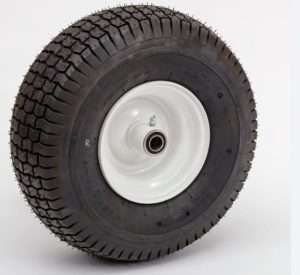Can you paint carbon fiber hoods? “A Picture Perfect Look: Painting Carbon Fiber”
Carbon fiber hoods are a popular upgrade for many car enthusiasts. Many people ask if they can paint carbon fiber hoods themselves, and the answer is yes! With a few simple steps and the right products, you can achieve a professional-looking paint job on your carbon fiber hood.
How to paint carbon fiber hoods
Whether you’re a professional car painter or a DIY-er, painting a carbon fiber hood can be a challenge. Here are some tips on how to get the perfect paint job on your carbon fiber hood.
1. Choose the right paint. For best results, use a urethane-based paint designed for use on carbon fiber.
2. Prepare the surface. Before painting, make sure the surface is clean and free of any dirt or debris. You may need to sand the surface lightly to create a smooth finish.
3. Apply primer. Once the surface is prepared, apply a layer of primer specifically designed for use on carbon fiber. This will help the paint adhere better and create a more durable finish.
4. Paint in thin layers. When applying the paint, be sure to do so in thin layers. Apply light coats rather than trying to cover the surface in one pass. If you apply too much paint at once, it will run and pool in areas.
5. Allow drying properly. Avoid touching the paint after it has been applied. You should allow a minimum of 24 hours for the primer and paint to dry properly before handling the surface.
6. Apply a clear coat. Once the paint has dried, you can apply a layer of clear coat. This will help protect the finish and create a glossy, high-quality look.
The best paint for carbon fiber hoods
If you own a car with a carbon fiber hood, you know that it can be difficult to keep it clean. Not only do they require special care when washing, but they also show every little scratch and scuff. This is why many people choose to paint their carbon fiber hoods. But what is the best paint for carbon fiber hoods?
There are a few things to consider when choosing a paint for your carbon fiber hood. The first is the type of finish you want. glossy or matte?
The second is the color. You can go with a traditional black or white, or get creative and go for something that really makes your car stand out.
And finally, you need to decide if you want a permanent or temporary solution.
If you want a glossy finish, the best paint to use is automotive-grade urethane clearcoat. It is durable and will protect the carbon fiber from UV damage. It also has a low-gloss finish that looks great on a carbon fiber hood.
If you want a matte finish, there are more options available to you. The best option is to use automotive-grade vinyl. The vinyl will conform to the shape of your hood and protect it from UV damage as well. It also has a low-gloss finish that looks great on a carbon fiber hood.
The Worst paint for carbon fiber hoods
Carbon fiber hoods are a popular choice for many car enthusiasts. However, there are a few things to consider before painting your carbon fiber hood. Here are the worst paint choices for carbon fiber hoods:
1. Oil-based paints: These paints will not adhere well to the carbon fiber and will eventually peel off.
2. Latex paints: While latex paints may initially adhere well to the carbon fiber, they will eventually become brittle and crack.
3. Enamel paints: Enamel paints may provide a good level of protection against UV rays and other elements, but they can be difficult to remove if you ever want to change the color of your hood.
The pros of painting carbon fiber hoods
A carbon fiber hood can make a car look more aggressive and high-tech, and can shave off some weight. But what are the real pros of painting a carbon fiber hood?
For one, painting a carbon fiber hood can help to protect it from the elements. UV rays can cause the clear coat on the hood to degrade over time, and paint will provide an extra layer of protection. The painting also makes it easier to repair any scratches or chips that may occur.
Another advantage of painting a carbon fiber hood is that it allows you to customize the look of your car. You can choose any color or finish you want, which means your car will really stand out from the crowd. And if you ever get tired of the color, you can always repaint it!
The cons of painting carbon fiber hoods
For one, carbon fiber is very sensitive to high temperatures. This means that if you’re not careful, you can easily damage the hood while painting it.
Additionally, paint can also distort the look of the carbon fiber, making it look less smooth and sleek.
Finally, paint can also add weight to the hood, which can impact its performance.
FAQs on: can you paint carbon fiber hoods
1. Can you paint carbon fiber hoods?
Yes, you can paint carbon fiber hoods. However, it is important to note that carbon fiber is a very delicate material. As such, you will need to take extra care when painting carbon fiber to avoid damaging it.
2. What type of paint should you use on carbon fiber?
The best type of paint to use on carbon fiber is high-quality automotive paint. This will help to ensure that the paint adheres properly to the carbon fiber and does not damage it.
3. How do you prepare carbon fiber for painting?
Before painting carbon fiber, you will need to clean it thoroughly. This can be done with mild soap and water. Once the carbon fiber is clean, you will need to sand it lightly to help the paint adhere.
4. How do you apply paint to carbon fiber?
When applying paint to carbon fiber, you will need to use a very thin paintbrush. This will help to avoid damaging the carbon fiber while still allowing you to get a good coat of paint on it.
5. What is the best way to protect painted carbon fiber?
Once you have painted your carbon fiber hood, you will need to apply a clear coat of paint over it. This will help to protect the paint and keep it from damage.



